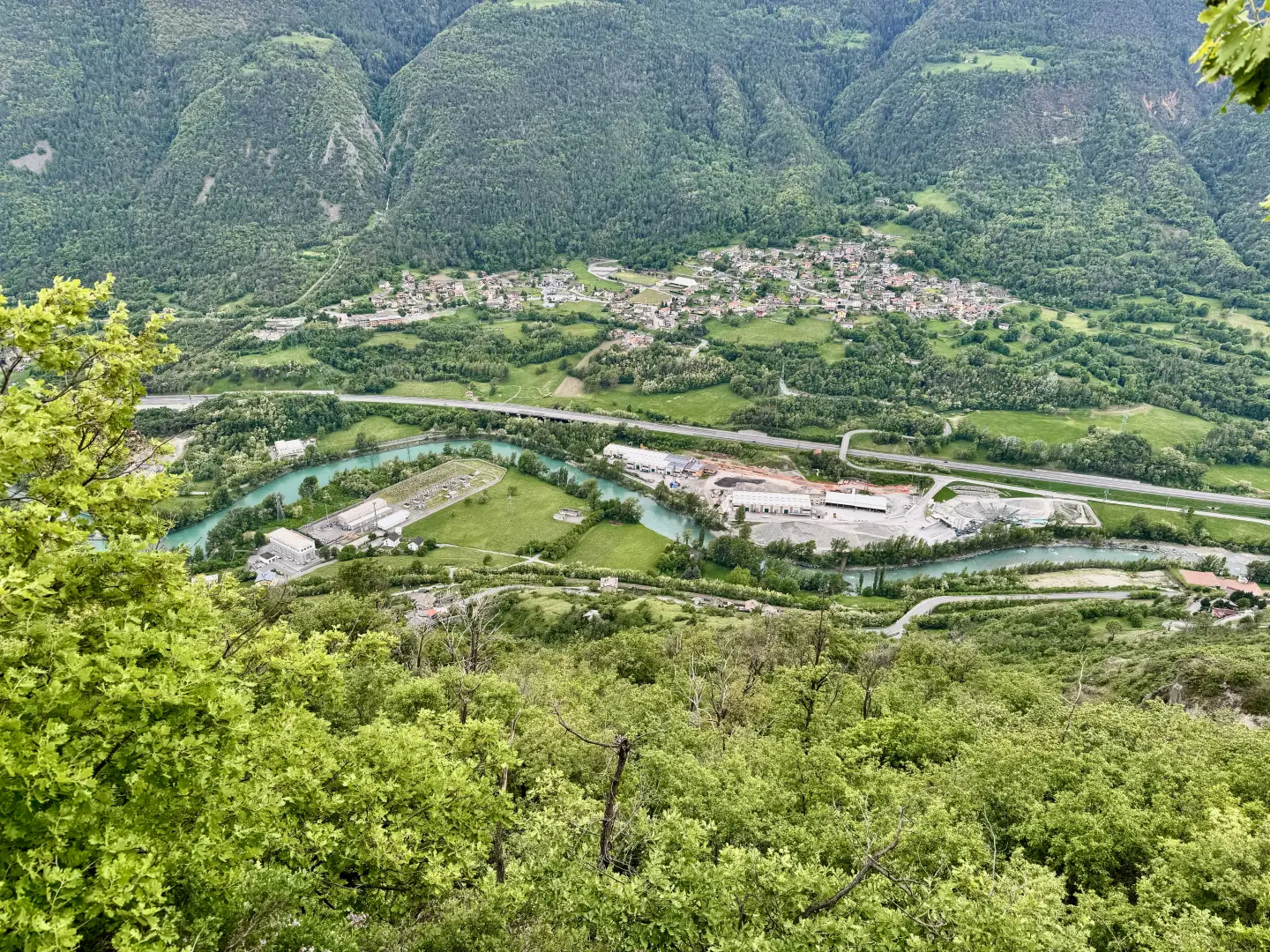Pontey

Access
Pontey is a municipality located in Valle d'Aosta, which can be reached by various modes of transport. The nearest airports are Turin-Caselle Airport (about 90 km) and Milan-Malpensa Airport (about 150 km), both connected to the region by motorways and public transport services. The main railway station of reference is Châtillon-Saint-Vincent, along the Aosta-Ivrea-Turin line, from where it is possible to continue by local bus or private transport.
Road access is mainly via the Turin-Aosta motorway, with the exit at Châtillon/Saint-Vincent. From there, one continues along the state road of Valle d'Aosta, which connects the main centres of the region. The provincial road network is well maintained and makes it possible to reach Pontey via secondary roads such as the regional road , suitable for private vehicles and public transport services.
For up-to-date information on timetables and routes, consult the official websites of:
Introduction
Located on the orographic right of the Dora Baltea, in a stretch of the middle Valle d'Aosta known locally as the 'envers' due to its limited winter sun exposure, Pontey is a small mountain municipality covering an area of about 16 km², just over twenty kilometres from Aosta. Although small in size, Pontey retains a solid identity, linked as much to its geographical location - at the foot of the mountains of the Monte Avic massif - as to the memory of a mining and rural past still legible in the architecture of the villages and in the signs left by man on the landscape. Its scattered hamlets, the remains of mines in Valmeriana, votive churches and the sobriety of daily life offer an authentic image of an area that has maintained strong cultural and environmental roots.
Description
The Pontey territory is varied and partly wild, rising from the 455 metres of the valley floor to the 2922 metres of the peaks that mark its upper boundary, among which the slopes of Mount Barbeston and Mount Avic stand out. The presence of the Dora Baltea marks the southern border, while the mountains, with their side valleys such as the Valmeriana, characterise the higher part, testifying to the close link between the community and its alpine environment. Villages such as Lassolaz, Clapey, Prelaz or Torin dot the slope, each with distinctive elements that tell of its history and past life: community ovens, chapels, wooden and stone rascards, traces of a spontaneous and functional architecture.
In terms of history, Pontey shows traces of human settlement dating back to protohistory, as suggested by the archaeological finds of tombs and metal artefacts. In the Middle Ages, the territory was part of the domains of the Seigneury of Châtillon, later passing under the control of the Challant family, which profoundly marked its feudal structure. Subsequent events, including the momentary acquisition by the Madruzzo family and subsequent restitution to the Challant family of Fénis, reflect the noble fragmentation typical of Alpine valleys, while more recent history is marked by mining exploitation and labour emigration.
The current economy of Pontey is based on small-scale farming, livestock breeding and the use of a serpentine quarry, a typical stone of the area. Commuting to nearby towns, such as Châtillon or Saint-Vincent, and even to Piedmont, integrates the employment fabric. Traditional activities survive in a reduced form, but continue to represent a heritage of identity, also linked to local production and care of the land.
The cultural dimension of Pontey can be seen in its religious festivals and ecclesiastical heritage. The parish church of St. Martin, built in 1764 in Lassolaz, houses valuable sacred furnishings, including a 15th-century wooden crucifix and a medieval processional cross. No less important are the rural chapels, such as that of Our Lady of Sorrows in Torin and that of the Exaltation of the Cross in Vallerod, small testimonies of popular devotion often accompanied by pictorial decorations or stone inscriptions. Traces of material culture can also be seen in buildings such as the Clapey oven, with its curious trapezoidal shape and soapstone portal, perhaps carved from an ancient millstone.
In terms of hiking, Pontey is a municipality to be discovered at a leisurely pace. Its network of paths, often little used, crosses forests, pastures and former mining areas such as the Valmeriana. Here, among the ruins of furnaces and tunnel entrances, one can read the memory of a harsh and ingenious mountain economy. Hiking in Pontey also has a cultural value, as it passes through villages that are now almost uninhabited and landscapes that tell of human adaptation to the Alpine environment. The ascents to Mount Barbeston or the routes that link up with those of the Mont Avic Natural Park offer an immersion in the most authentic nature of the middle valley.
Information
Area: 15.97 km²
Altitude: 526m
Maximum elevation: 2,922m - Mont Ruvi
Number of inhabitants: 588 (as of 31.12.2024)
Name in dialect: Pontey
Inhabitants' name: Pontesans
Patron Saint: Saint Martin, celebrated on 11 November
Neighbouring municipalities: Chambave, Champdepraz, Châtillon, Saint-Denis
Internet site: www.comune.pontey.ao.it